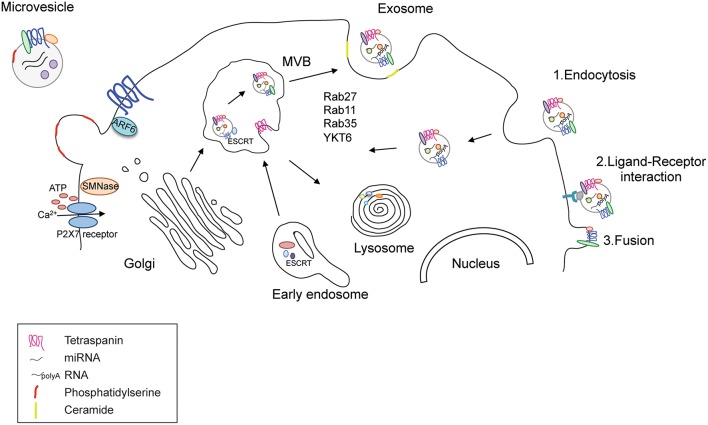Figure 1.
Release and uptake of MVs and exosomes. Functional EVs are released through two different pathways; MVs bud directly from the plasma membrane upon increase of extracellular ATP that opens the P2X7 receptor and allows the entrance of calcium. Their membrane is enriched in phosphatydil serine and tetraspanins. Their cargo contains and cytoplasmic proteins, RNAs and DNAs. Exosomes are derived from the late endosome or multivesicular bodies (MVB) where ESCRT coordinates the cargo loading and vesicle release. Rab GTPases, such as Rab27, 35, 11 and the SNARE protein YKY6 coordinate vesicle tethering and fusion to the plasma membrane. The cargo content comprises proteins and RNAs like in MVs. The presence of DNA is highly debated. Exosomes can enter in recipient cells trough endocytosis, ligand-receptor interaction (where both the ligand and the receptor are not clearly uncovered) or fusion with the plasma membrane.

